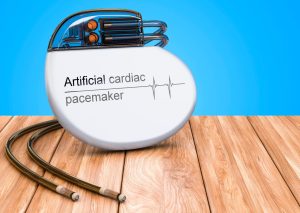 Introduction: The Three Princes of Serendip, where Serendip is the Classical Persian name for Sri Lanka, is a fairy tale in which the protagonists ‘were always making discoveries, by accidents and sagacity, of things they were not in quest of.’ Based on this, Horace Walpole coined the word serendipity in 1754 to mean inventions or discoveries made by accident. Science and technology offer many anecdotes of serendipitous discoveries and inventions. Here is the ninth such story in a series about serendipitous, patented inventions.
Introduction: The Three Princes of Serendip, where Serendip is the Classical Persian name for Sri Lanka, is a fairy tale in which the protagonists ‘were always making discoveries, by accidents and sagacity, of things they were not in quest of.’ Based on this, Horace Walpole coined the word serendipity in 1754 to mean inventions or discoveries made by accident. Science and technology offer many anecdotes of serendipitous discoveries and inventions. Here is the ninth such story in a series about serendipitous, patented inventions.
There are heart conditions such as the heart beating too slowly (bradycardia) and many other such disconcerting and dangerous ones. Patients with what was referred to as a “heart block” suffered blackouts, dizziness, and even death because their hearts’ own electrical impulses did not function as required. To treat such conditions, devices called artificial pacemakers were developed. They were bulky and the patient had to be lying down to use it. They were also expensive. Many improvements were made over the decades but there were none small enough to be implanted into the human body.
Wilson Greatbatch, an American inventor, was tinkering with a circuit called a blocking oscillator in 1956. A blocking oscillator is an electronic circuit that produces short, periodic pulses. He soldered a resistor with a value a hundred times higher than he intended to – 1 MΩ (1000,000 Ohms) in place of 10 kΩ (10,000 Ohms). Instead of getting the pulse rate (pulses per second) he wanted, he got a much lower one. He noticed that this pulse rate was close to the normal pulse rate of a human being. Here is a video about him in which he himself tells the story of his invention of the first practical implantable artificial pacemaker.
Greatbatch realized that he could tweak the circuit to get a pulse rate suitable to drive a human heart at the right pace and that this was exactly what was needed to replace the bulky, painful pacemakers hospitals were then using. By implanting electrodes directly from his new oscillator into the heart muscle, he discovered that his artificial pacemaker could keep a patient’s heart on track indefinitely.
Initially, the device was tested on animals, such as dogs. Some design improvements later, in 1957, it was fit for human testing. This implantable pacemaker allowed people with heart problems to lead normal lives without the constant fear of fainting or even sudden death.
He applied for a patent in 1960, which was granted in 1962. He licensed the patent to Medtronic®, which became the leading maker of implantable pacemakers. The only drawback of this implantable pacemaker was the battery, which did not last long enough.
Greatbatch set up his own company, Wilson Greatbatch Ltd. (later Greatbatch Inc.), to do further research on better, long-lasting batteries so that a pacemaker could last years. His work resulted in a lithium-iodine cell, and by 1972, he had developed an implantable version. That cell could power pacemakers for ten years. At one time, his batteries were used in ninety per cent of all pacemakers. They were said to have been used in some equipment on the Space Shuttle.
Here is a link to all his patents on a variety of subjects.
Author: J L Anil Kumar
First Published by: Lexology here



